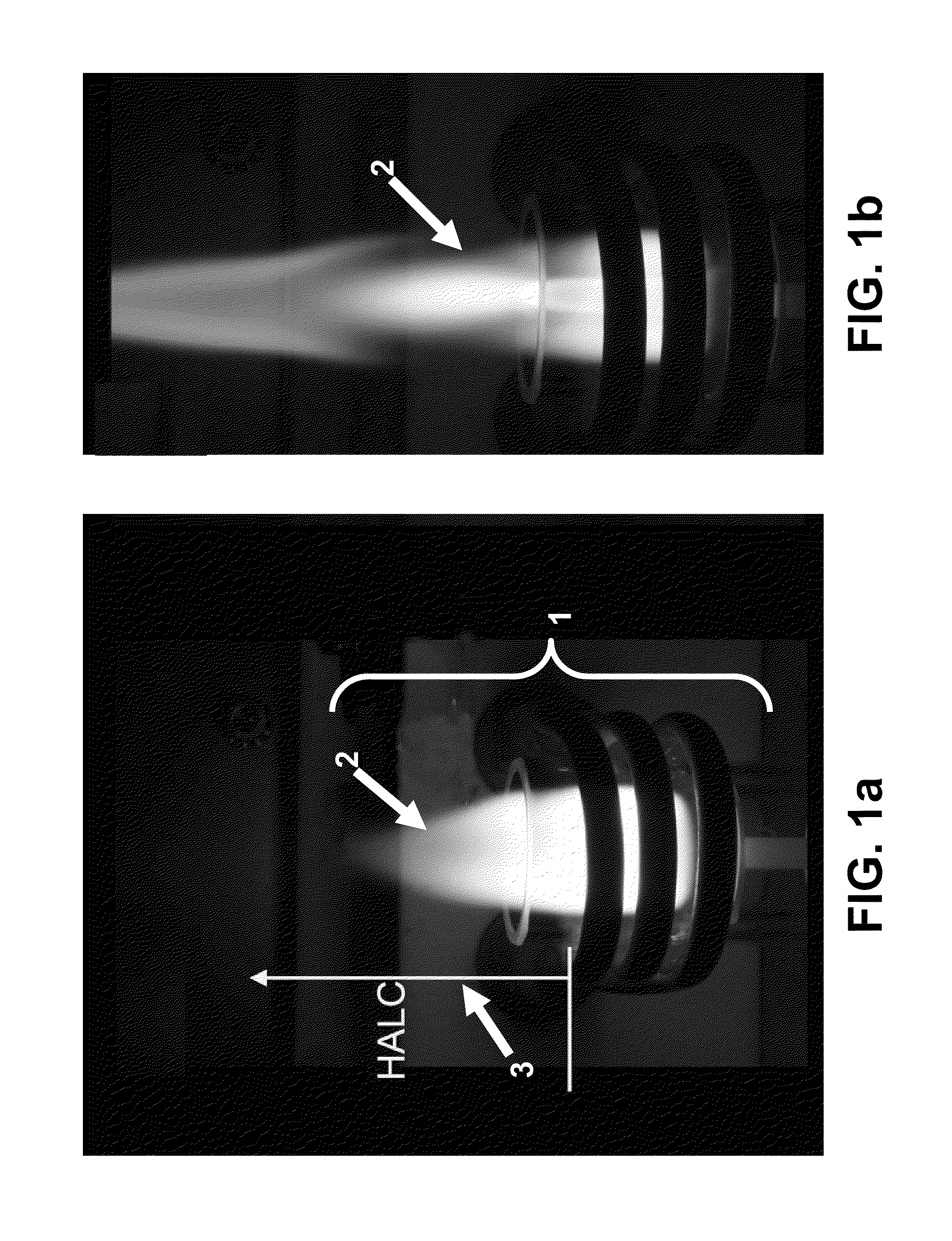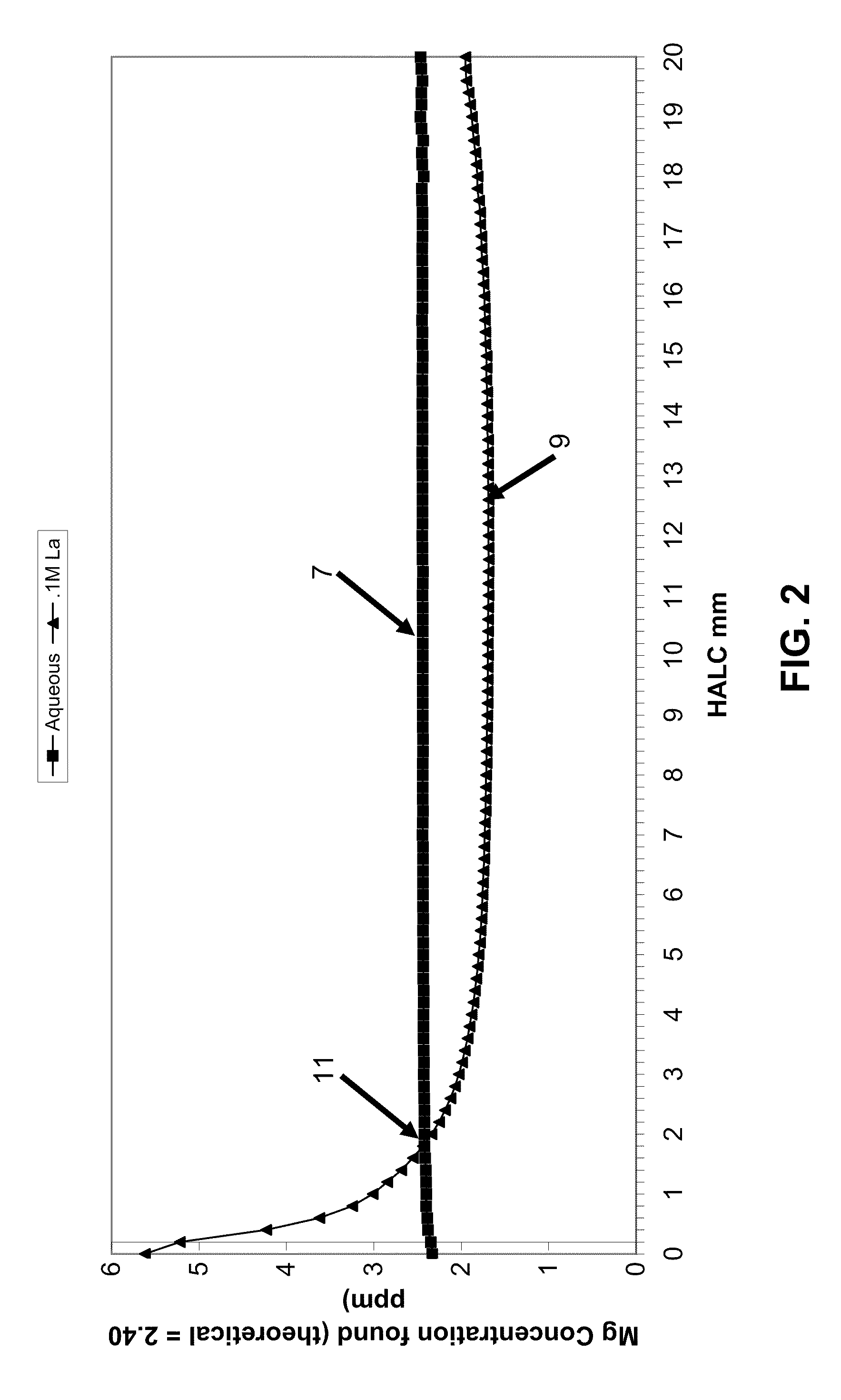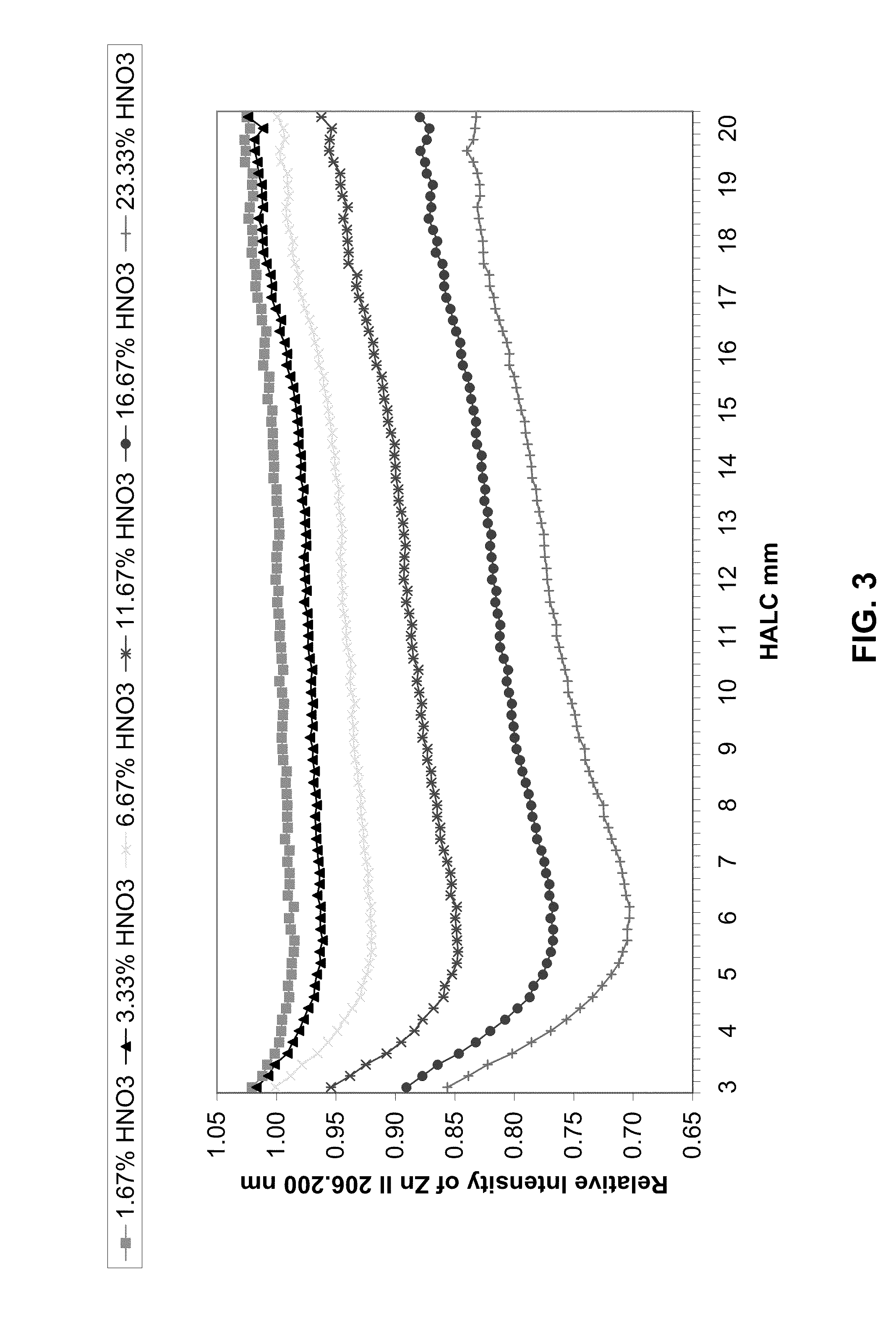Methods for detecting and correcting inaccurate results in inductively coupled plasma-atomic emission spectrometry
a technology of inductively coupled plasma and atomic emission spectrometry, which is applied in the direction of spectrometry/spectrophotometry/monochromators, optical radiation measurement, instruments, etc., can solve problems such as errors, and achieve the effect of easy automaticity
- Summary
- Abstract
- Description
- Claims
- Application Information
AI Technical Summary
Benefits of technology
Problems solved by technology
Method used
Image
Examples
Embodiment Construction
[0034]A method for detecting and possibly correcting inaccurate results in inductively coupled plasma-atomic emission spectrometry (ICP-AES). ICP-AES analysis is performed across a plurality of selected locations in the plasma on one or more known samples each comprising one or more sought-for analytes, collecting the light intensity at one or more selected wavelengths (emission lines) emitted by the one or more sought-for analytes, to create a calibration dataset. ICP-AES analysis is preferably performed on a plurality of known samples having a variety of concentrations for each sought-for species. ICP-AES analysis is performed across the plurality of selected locations in the plasma on an unknown sample, collecting the light intensity at the one or more selected wavelengths corresponding to emission lines of the one or more sought-for analytes, creating a first dataset.
[0035]The first dataset is then calibrated with the calibration dataset creating a calibrated first dataset curve...
PUM
 Login to View More
Login to View More Abstract
Description
Claims
Application Information
 Login to View More
Login to View More - R&D
- Intellectual Property
- Life Sciences
- Materials
- Tech Scout
- Unparalleled Data Quality
- Higher Quality Content
- 60% Fewer Hallucinations
Browse by: Latest US Patents, China's latest patents, Technical Efficacy Thesaurus, Application Domain, Technology Topic, Popular Technical Reports.
© 2025 PatSnap. All rights reserved.Legal|Privacy policy|Modern Slavery Act Transparency Statement|Sitemap|About US| Contact US: help@patsnap.com



